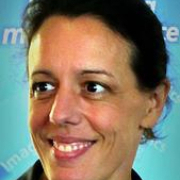We are happy to announce two exciting keynote lectures by Dr. Michael Sacks and Dr. Sandrine de Ribaupierre!

Dr. Michael S. Sacks, Ph.D
A. “Tex” Moncrief, Jr. Simulation-Based Engineering Science Chair I,
Director – Center for Cardiovascular Simulation,
Institute for Computational Engineering and Sciences, Department of Biomedical Engineering
The University of Texas at Austin
E-mail: msacks@ices.utexas.edu
Title: Multi-resolution Geometric Models of the Mitral Valve
Abstract: An essential element of the heart function, the mitral valve (MV) ensures proper directional blood flow between the left heart chambers. Over the past two decades, computational simulations have made marked advancements towards providing powerful predictive tools to better understand valvular function and improve treatments for MV disease. However, challenges remain in the development of robust means for the quantification and representation of MV leaflet geometry. In this study, we present a novel modeling pipeline to quantitatively characterize and represent MV leaflet surface geometry. Our methodology utilized a two-part additive decomposition of the MV geometric features to decouple the macro-level general leaflet shape descriptors from the leaflet fine-scale features. First, the general shapes of five ovine MV leaflets were modeled using superquadric surfaces. Second, the finer-scale geometric details were captured, quantified, and reconstructed via a 2D Fourier analysis with an additional sparsity constraint. This spectral approach allowed us to easily control the level of geometric details in the reconstructed geometry. The results revealed that our methodology provided a robust and accurate approach to develop MV-specific models with an adjustable level of spatial resolution and geometric detail. Such fully customizable models provide the necessary means to perform computational simulations of the MV in a range of geometric detail, allowing identification of the complexity required to achieve predictive MV simulations to a desired accuracy level. We then extend these approaches to develop novel in-vivo methods for patient specific model development.
Bio: Professor Michael Sacks is the W. A. “Tex” Moncrief, Jr. Simulation-Based Engineering Science Chair and a world authority on cardiovascular biomechanics. His research focuses on the quantification and modeling of the structure-mechanical properties of native and engineered cardiovascular soft tissues. He is a leading international authority on the mechanical behavior and function of the native and replacement heart valves. He is also active in the biomechanics of engineered tissues, and in understanding the in-vitro and in-vivo remodeling processes from a functional biomechanical perspective. Dr. Sacks is currently director of the ICES Center for Cardiovascular Simulation and Professor of Biomedical Engineering. His research includes multi-scale studies of cell/tissue/organ mechanical interactions in heart valves and is particularly interested in determining the local stress environment for heart valve interstitial cells. Recent research has included developing novel multi-scale models of the mitral valve and bio-prosthetic heart valves, as well as constitutive models of ventricular myocardium that allow for the separation of the individual contributions of the myocyte and connective tissue networks.
 Dr. Sandrine de Ribaupierre, MD
Dr. Sandrine de Ribaupierre, MD
Neurosurgery, Western University,
London Health Sciences Centre
London ON Canada
Email :sderibau@uwo.ca
Title: Neurosurgeons’ Challenges to Using Virtual and Augmented Reality Visualization in the Clinical World
Abstract: Trying to simulate an operating room environment and surgical tasks in augmented or virtual reality is a challenge many are attempting to solve in order to train surgeons, or help them operate. This lecture will focus on some of the needs of the surgeon, as well as current challenges associated with human computer interface, perception, and workflow that have hampered both the development and adoption of mixed reality visualization solutions.
Bio: Dr. de Ribaupierre earned her MD at the University of Geneva in Switzerland. After a Neurosurgery residency in Lausanne (Switzerland), she completed an epilepsy fellowship in the Foundation Rothschild in Paris (France), then a pediatric neurosurgery fellowship in the Hospital for Sick Children in Toronto. She is currently an Associate Professor in the Division of Neurosurgery at Western University, working as a paediatric neurosurgeon with some involvement in paediatric and adult trauma and adult epilepsy surgery. She is collaborating with CSTAR, Robarts and the Centre for Brain and Mind. Some of her research areas are virtual reality as an educational tool, and how it affects learning, augmented reality for surgical training, and functional imaging. Her clinical research focuses on preterm infants with intraventricular haemorrhage and finding new ways of monitoring them by the bedside. She currently holds a CIHR grant investigating new technologies for preterm monitoring in which she collaborates with neonatologists and imaging researchers to use 3D US and NIRS to monitor and guide treatment for IVH in low-weight preterm infants.
